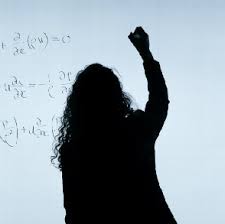Identification and use of P-Prim in solving problems in special relativity
Abstract
Aims (Background): Problem-solving is one of the most well-addressed lines of investigation in the education of physics, with numerous studies in various branches of this science, including mechanics, electromagnetism, thermodynamics, and optics, that have adopted diverse methodologies of research. However, the training of physicists has been less well-attended in the literature, especially in how physicists in training solve problems. In particular, solving problems in special relativity is not a well-studied theme because, at the high school and undergraduate levels, this area is usually presented only conceptually. With this in mind, this paper aims to report the results of a study of problem-solving in special relativity by physics students. Materials and methods: It implements a test situation that requires the utilization of phenomenological primitives (P-Prim) to solve the problem presented. It includes a description of the students’ use of P-Prim. Results: The study found that students do not always use P-Prim correctly, resulting in conceptual errors, or they choose conceptual tools that cannot be considered P-Prim that, though correct concepts in physics, are not necessary to solve the problem. Conclusion: We consider that the utilization of the P-Prim is advantageous to solve problems of this kind. Therefore, we recommend professors emphasize the P-Prims’ employ when introducing the topic before moving on to problem-solving.References
Álvarez, M. (2018). Enseñanza de la Teoría Especial de la Relatividad mediante Instrucción por Pares. Tesis para obtener el grado de Doctor en Ciencias en Física Educativa, IPN, México.
Álvarez-Alvarado, M., Mora, C. and Cevallos-Reyes, C. (2019). Peer instruction to address alternative conceptions in Einstein’s special relativity. Revista Brasileira de Ensino de Física, 41(4).
Arriassecq, I. & Greca, M. (2004). Enseñanza de la teoría de la relatividad especial en el ciclo polimodal: dificultades manifestadas por los docentes y textos de uso habitual. Revista Electrónica de Enseñanza de las Ciencias, 3(2).
Arriassecq, I. & Greca, M. (2009). La teoría especial de la relatividad: secuencia de enseñanza y aprendizaje para el nivel de enseñanza secundaria. Enseñanza de las Ciencias, Número Extra VIII Congreso Internacional sobre Investigación en Didáctica de las Ciencias, Barcelona.
Barthelemy, J. (2016). Una teoría cuántica de la relatividad a la luz del centenario de la Teoría de la Relatividad General. Tradición segunda época, 2(15).
Becerra, Carlos, Gras-Martí, A. and Martínez-Torregrosa, J. Análisis de la resolución de problemas de física en secundaria y primer curso universitario en Chile, Enseñanza De Las Ciencias, 22(2).
Bisquerra, R. (Coord.) (2009). Metodología de la Investigación Educativa. Editorial La Muralla, Madrid.
Buteler, L. & Gangozo, Z. (2003). La resolución de problemas en Física y su relación con el enunciado. Revista de Enseñanza de la Física, 16(5).
Carretero, M. (2006). Celebremos el primer centenario de la teoría de la relatividad conociendo a los científicos y su trabajo. Rev. Eureka. Enseñ. Divul. Cien., 3(2).
Chu, H. (2008). Naive Students' Conceptual Development and Beliefs: The Need for Multiple Analyses to Determine What Contributes to Student Success in a University Introductory Physics Course. Research in Science Education., 38(1).
diSessa, A. (1988). Knowledge in pieces. In G. Forman & P. Putall (Eds.), Constructivism in the computer edge, 49-70. Hilldale, NJ; Lawrence Erlbaum Associates, Inc.
diSessa, A (1993). Towards an epistemology of physics. Cognit. Instruct. 10(3).
Goldstein, H (1994). Mecánica Clásica. Editorial Reverté, Barcelona.
Greiner, W. (2000). Relativistic Quantum Mechanics, 3rd Edition, Springer-Verlag, Berlin Heidelberg.
Hammer, D. (1996). More than misconceptions: Multiple perspectives on student knowledge and reasoning and appropriate role for education research. American Journal of Physics, 64.
Hammer, D. (1996). Misconceptions or P-Prims: How May Alternative Perspectives of Cognitive Structure Influence Instructional Perception and Intentions? The Journal of the Learning Science, 5(2).
Kapon, S. & diSessa, A. (2010). Instructional explanation as an interface -the role of explanatory primitives. 2010 Physics Education Research Conference, American Institute of Physics.
Landau, L. & Lifshitz, M. (1981). Curso de Física Teórica, volumen II. Teoría Clásica de los Campos, 2da ed., Reverté.
Levrini, O. (2014). The Role of History and Philosophy in Research on Teaching and Learning of Relativity. International Handbook of Research in History, Philosophy and Science Teaching.
Moltó, E. (2003). Fundamentos psicológicos de la enseñanza y el aprendizaje. La Habana, Cuba: Ministerio de Educación.
Otero, M.R., Arlego, M. & Muñoz Guzmán, E.A. (2019) ¿Cómo y por qué estudiar la relatividad de la simultaneidad en la escuela secundaria? Góndola, Enseñanza y Aprendizaje de las Ciencias, 14(2).
Pérez, H. & Solbes, J. (2006). Una propuesta sobre enseñanza de la relatividad en el bachillerato como motivación para el aprendizaje de la física. Enseñanza de las Ciencias, 24(2).
Pérez, D. (2016). Einstein, Eddington y la teoría de la relatividad. Protepsis, 5(9).
Prado, X., Domínguez-Castiñeiras, J., Area, I., Paredes, A. and Mira, J. (2020). Aprendizaje de la Teoría de la Relatividad Restringida de Einstein. Estado de la Cuestión. Revista Eureka sobre Enseñanza y Divulgación de las Ciencias, 17(1).
Ramírez, M., González, A. and Miranda, I. (2009). Detección y análisis de errores conceptuales en estudiantes de física de nivel universitario utilizando el sistema 4MAT. Latin American Journal of Physics Education, 3(1),
Ramírez, M. y Castrejón, J. (2019). Identification and Classification of Misconceptions in Solving a Variant for the Two-Body Problem. Transylvanian Review, 27(40).
Resnik, R., Halliday, D. & Krane, K. (2002). Física Volumen 1 y 2. Compañía Editorial Continental, México.
Santaló, L. (1969). Vectores y tensores con sus aplicaciones. Editorial Universitaria de Buenos Aires, Argentina.
Sears, F., Zemansky, M., Young, H. and Freedman, R. (2004). Física Universitaria Volumen 1 y 2. Pearson educación, México.
Tipler, A. (2004). Física para la ciencia y la tecnología Volumen 1 y 2. Editorial Reverté, España.

Copyright (c) 2022 Transylvanian Review

This work is licensed under a Creative Commons Attribution-NonCommercial-NoDerivatives 4.0 International License.



